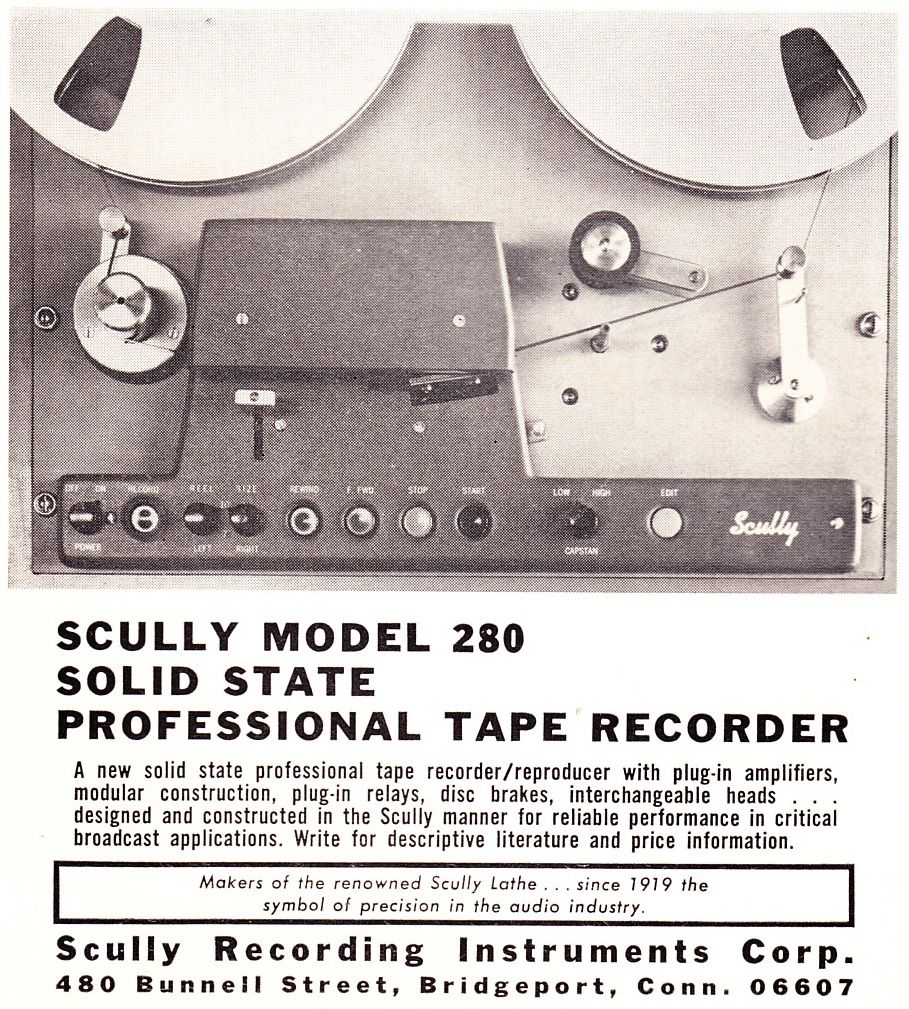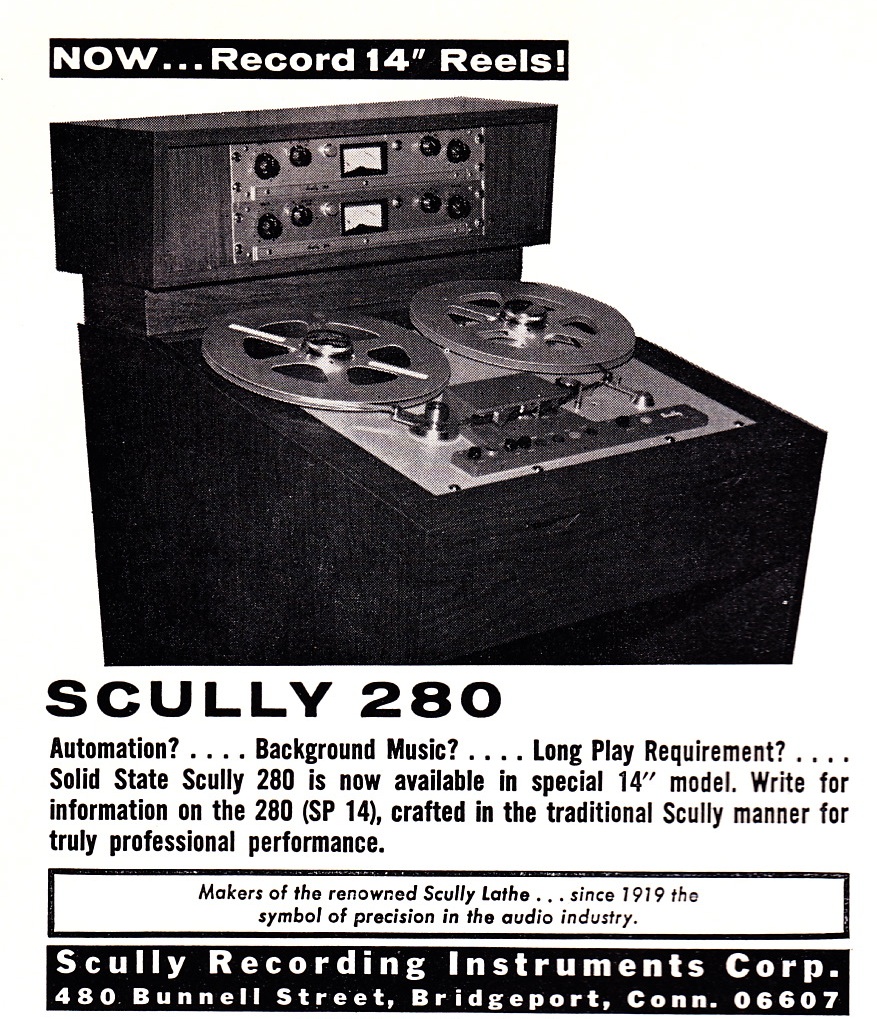 How are y’all doing today… long-time readers will know that there is a lot of Scully material on this site… Scully was a Bridgeport institution; I drive by the ole Scully plant everyday on my way to the studio. Not sure what goes on in that large brick structure these days, but many years ago it was turning out most of the lathes that were cutting LP masters in the US. Scully tape machines were never as ubiquitous as their lathes, but were a big part of the US recording scene nonetheless… Scully was a small family-owned company that competed favorably with Ampex, and this itself is notable. Anyhow… at left is the Scully 270 transport, and below, I found a couple of period adverts for the 280, which seems to have been their most successful tape-machine design, if the number of surviving units is any indication. My friend Sal sold his 280 -two-track AND 4-track machines, together with carts and racks, for $1000 last year… and it was hard to find a buyer even at that price. I will probably forever regret not buying them myself, but… you can’t have it all, can you… Anyhow, if you are using a 280 these days, drop us a line and let us know whatcha think.
How are y’all doing today… long-time readers will know that there is a lot of Scully material on this site… Scully was a Bridgeport institution; I drive by the ole Scully plant everyday on my way to the studio. Not sure what goes on in that large brick structure these days, but many years ago it was turning out most of the lathes that were cutting LP masters in the US. Scully tape machines were never as ubiquitous as their lathes, but were a big part of the US recording scene nonetheless… Scully was a small family-owned company that competed favorably with Ampex, and this itself is notable. Anyhow… at left is the Scully 270 transport, and below, I found a couple of period adverts for the 280, which seems to have been their most successful tape-machine design, if the number of surviving units is any indication. My friend Sal sold his 280 -two-track AND 4-track machines, together with carts and racks, for $1000 last year… and it was hard to find a buyer even at that price. I will probably forever regret not buying them myself, but… you can’t have it all, can you… Anyhow, if you are using a 280 these days, drop us a line and let us know whatcha think.
For more Scully info, click the links below:
The Scully Model 100 16-track machine
Larry Scully interview and history


4 replies on “Scully kit of the early 1960s”
I worked for a major radio syndicator back in the mid-70’s. They produced reel tape formats for radio stations. The Scully 270s played back our master tapes when we made the submaster for dubbing purposes (the submasters were recorded on MCI JH-110s).
Built like tanks and the rewind and fast forward was of the same ilk as the Magencord PT-6. Ours were mounted horizontally. Woe to you if you were in wind mode on a vertically mounted 270 and the tape reels were NOT locked down!
I’ve seen a Scully 270 up close and I agree it’s built like a tank. Perhaps not as tank-like as an Ampex 300, but simpler. One of the two things I noticed that I didn’t like was a tiny-diameter capstan and smallish pinch-roller, meaning tape movement was probably not great and wow and flutter were probably somewhat high in real-world broadcast conditions (what? replace that worn out pinch-roller? why? the tape’s still movin’ ain’t it?). The other thing I noticed was that the play electronics cards didn’t attached or sit in a super-secure way. Probably OK except in an earthquake zone, as long as the rack wasn’t moved or jostled. The circuitry and parts count were super-simple, which was really smart and aided in the tank-like MO. If I got one of these today, I’d investigate using a different capstan motor with a much larger-diameter capstan. I’d also re-cap the electronics cards and check to make sure all the transistors and resistors were still at spec values. Because it’s such a simple and direct circuit, you should be able to coax very good playback out of it.
— Tom Fine
HI:
I Am the owner of a Scully 280-14 and was wondering if You have parts for such a machine.
The unique thing about the unit is its a vertical mount like the 270 Player.
reply when you have time.
gary kotch
gkotch4776@wowway.com
Hi Chris. I wanted to thank you for the great posts on my family’s legacy in recorded music. I have a 280 a LJ12 and love using them. I am restoring and digitizing the Jerden Music catalog on the 280 which is from 1965 and should provide authentic playback of the original masters. We are also restoring Lathe #13 after having restored Lathe #3 for the BBC America documentary American Epic which you should watch if you have not already. Keep it up. Be safe…Best..Chris Scully